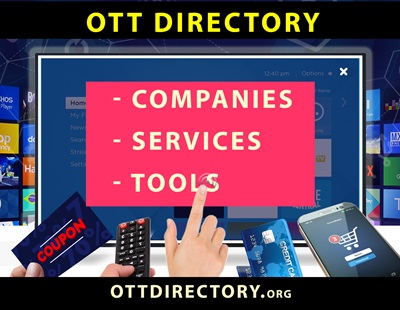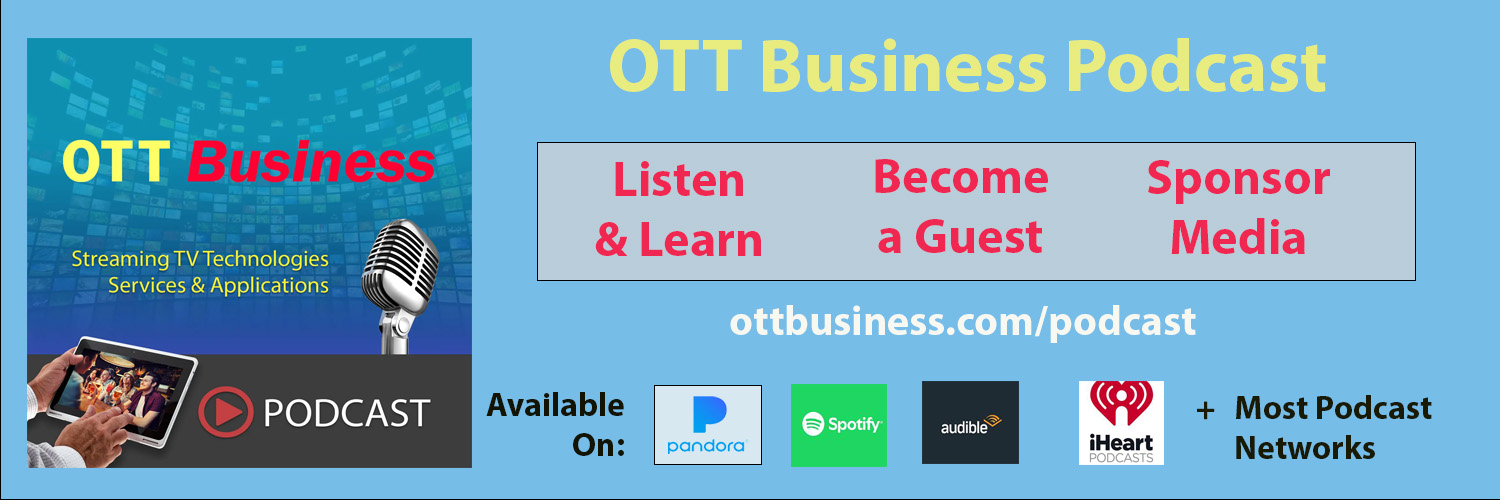Metadata Management Tools
 Metadata management tools and services are used for gathering, organizing, managing, and retrieving vast amounts of content metadata for OTT and streaming TV service providers. These tools solve key problems such as inconsistent metadata, inefficient content search, poor content discovery, and complex data integration. Key features include automated metadata tagging, customizable metadata schemas, real-time metadata updates, integration with content management systems (CMS), and advanced search capabilities. Additionally, these tools often provide analytics for metadata usage, enhancing content strategy and viewer engagement. By leveraging metadata management tools, OTT and streaming TV providers can significantly improve content discoverability, operational efficiency, and user experience, making it essential for industry professionals to explore these solutions further.
Metadata management tools and services are used for gathering, organizing, managing, and retrieving vast amounts of content metadata for OTT and streaming TV service providers. These tools solve key problems such as inconsistent metadata, inefficient content search, poor content discovery, and complex data integration. Key features include automated metadata tagging, customizable metadata schemas, real-time metadata updates, integration with content management systems (CMS), and advanced search capabilities. Additionally, these tools often provide analytics for metadata usage, enhancing content strategy and viewer engagement. By leveraging metadata management tools, OTT and streaming TV providers can significantly improve content discoverability, operational efficiency, and user experience, making it essential for industry professionals to explore these solutions further.
Metadata Management Tools and Services
ContentWise – provides personalization and metadata solutions for multi-screen pay TV, OTT, broadcast and streaming platforms. ContentWise works with CMS platforms and front-end applications to deliver dynamic UX personalisation, discovery, recommendations, metadata management and predictive analytics to content acquisition, marketing and editorial teams.
Digital Nirvana – Specializes in metadata creation and enrichment to streamline content management and improve discoverability.
DVEO – Provides tools for metadata management, including EPGs and content classification for video streaming.
Entertainment Identifier Registry (EIDR) – Provides unique identifiers for a wide range of audiovisual objects to enhance metadata management.
Fabric – Delivers powerful metadata management solutions to enhance content discovery and viewer personalization.
Gracenote – Gracenote provides metadata and content recognition services that enhance tCommerce experiences by linking TV content with shopping opportunities.
IMDB Metadata Services – Provides rich metadata including cast, crew, and detailed information for TV shows and movies.
Media Distillery – Enhances viewer experience with real-time metadata extraction and enrichment for video content.
MetaBroadcast – Offers powerful tools for gathering, managing, and distributing broadcast and on-demand metadata.
Red Bee Media – Provides metadata services for content discovery, including EPGs and personalized recommendations.
Rovi Metadata – Powers entertainment discovery with robust metadata for TV, movies, and sports.
Simply.TV – Provides extensive metadata for global TV and streaming services, including program guides and content discovery.
Stingray Media – Offers metadata solutions for music, video, and TV content to enhance user experience and engagement.
TiVo Metadata – Offers comprehensive metadata solutions to power discovery and personalization for TV and video content.
Triveni Digital – Offers metadata generation and management solutions to improve content discovery and viewer engagement.
Vubiquity Metadata Services – Provides comprehensive metadata services including EPGs, synopsis, and ratings for enhanced content discovery.
XroadMedia Ncanto – Delivers advanced content discovery and personalization services using rich metadata.
Metadata Management Tools Key Features
Analytics and Reporting
Tools for tracking metadata usage and performance metrics to gain insights and improve content management strategies. This feature is important because it allows service providers to make data-driven decisions, optimize their content offerings, and understand viewer behavior.
Automated Metadata Extraction
Automated tools for extracting metadata from video files and other content sources. This feature is crucial as it reduces manual labor, speeds up the metadata generation process, and ensures accuracy in capturing relevant details from the content.
Collaboration Features
Capabilities for multiple users to collaborate on metadata management tasks simultaneously. This is important because it enhances team efficiency, allows for collective input and oversight, and ensures consistency in metadata handling across departments.
Content Categorization and Organization
Ability to classify and organize movies, TV shows, and other content based on genres, themes, and other criteria. This feature is essential for improving content discoverability, helping viewers easily find the content they are interested in, and enhancing overall user experience.
Content Rights Management
Features to manage and track content rights and licensing information. This is critical for ensuring compliance with legal agreements, avoiding unauthorized use, and managing content distribution effectively.
Data Integration and Interoperability
Compatibility with existing systems and APIs for seamless integration and data exchange. This feature is significant because it allows for smooth operations across different platforms, ensuring that metadata can be shared and utilized efficiently.
Metadata Enrichment
Integration with third-party databases to enrich metadata with additional information such as cast, crew, synopsis, ratings, and reviews. This is important as enriched metadata provides more detailed and valuable information, enhancing content searchability and viewer engagement.
Metadata Field Customization
Options to customize metadata fields and structures to fit specific business needs. This feature is essential for tailoring the metadata system to unique requirements, ensuring that all necessary information is captured and organized appropriately.
Metadata Normalization
Metadata normalization is the process of standardizing metadata from various sources into a consistent format to ensure uniformity, improve data quality, and enhance interoperability across different systems. This is crucial for maintaining data integrity, facilitating seamless data exchange, and providing a cohesive viewer experience.
Metadata Sources
Ability for the metadata management tool to connect to and gather metadata from multiple sources. This feature is vital because it ensures a comprehensive metadata repository, drawing from diverse origins to provide a rich and complete dataset.
Personalization Capabilities
Tools for using metadata to personalize content recommendations based on viewer preferences and viewing history. This is important as it enhances viewer satisfaction and engagement by delivering tailored content experiences.
Program Guide Creation
Features for creating and managing detailed program guides, including schedules and descriptions. This is significant because it helps viewers navigate content offerings, stay informed about upcoming shows, and plan their viewing accordingly.
Real-Time Updates and Synchronization
Ability to update and synchronize metadata in real-time across all platforms and devices. This feature is crucial for ensuring that the latest information is always available, providing a seamless and consistent experience for viewers.
Security and Compliance
Robust security measures to protect metadata and ensure compliance with industry standards and regulations. This is essential for safeguarding sensitive information, maintaining viewer trust, and avoiding legal issues.
Metadata Management Tools Glossary
- Application Programming Interface (API) – A set of tools and protocols that allow different software applications to communicate with each other.
- Automated Metadata Tagging – The process of automatically adding metadata tags to content using algorithms and machine learning.
- Content Management System (CMS) – A software application used to create, manage, and modify digital content.
- Content Recognition Technology (CRT) – Tools that identify and catalog content based on audio and visual cues.
- Electronic Program Guide (EPG) – An on-screen guide that provides information about television programs, including schedules and descriptions.
- Extended Metadata – Additional information about content, such as genre, cast, crew, and plot summaries.
- Hypertext Transfer Protocol Secure (HTTPS) – An extension of HTTP used for secure communication over a computer network.
- Integrated Metadata Schema (IMS) – A standardized framework for organizing and categorizing metadata.
- International Organization for Standardization (ISO) – An international body that develops and publishes standards for various industries.
- Machine Learning (ML) – A type of artificial intelligence that allows systems to learn and improve from experience without being explicitly programmed.
- Metadata Aggregation – The process of collecting and combining metadata from multiple sources.
- Metadata Enrichment – Enhancing basic metadata with additional information to improve content discoverability and user experience.
- Metadata Normalization – The process of standardizing metadata to ensure consistency and compatibility across different systems.
- Personalized Content Recommendations – Tailored suggestions of content based on a viewer’s preferences and viewing history.
- Programmatic Advertising – Automated buying and selling of online advertising using software.
- Real-Time Metadata Updates – Immediate updating of metadata to reflect current information and changes.
- Rich Media – Interactive multimedia content that includes audio, video, and other elements.
- Search Engine Optimization (SEO) – Techniques used to increase the visibility of content on search engines.
- Unique Identifiers (UID) – Distinct codes assigned to content for easy identification and retrieval.
- User Experience (UX) – The overall experience of a person using a product, particularly in terms of how easy and pleasing it is to use.

